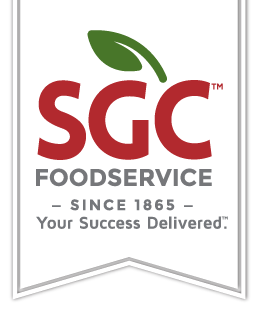The Unexpected Delight of Hospital Food
In a world where commercial restaurant prices are skyrocketing, hospital food, often stereotyped as bland and unappetizing, has surprisingly taken the spotlight as a delightful and affordable meal option. A TikTok video posted by user Dre (@dreindallas) has recently gone viral, garnering over 1.4 million views and a flood of positive reactions. In the video, Dre shares his unexpected discovery of a cheap meal spot, none other than the UT Southwestern Medical Center in Dallas.
The video features Dre detailing his experience visiting the cafeteria at UT Southwestern Medical Center, not as a patient, but as someone looking for a good meal. He highlights the quality and price of the food, expressing his surprise and satisfaction with the meals provided. The comments section of the video is filled with other TikTok users sharing similar experiences or expressing their surprise and delight at this unexpected discovery.
Challenging Perceptions
Hospital food has long been associated with negative stereotypes, often perceived as tasteless, overcooked, and lacking in nutrition. However, this viral moment challenges those perceptions and brings to light the potential for hospital food to be both delicious and affordable.
Lessons for Hospital Foodservice Directors
Invest in Quality
The positive reactions to the food at UT Southwestern Medical Center highlight the importance of investing in quality ingredients and preparation. Providing delicious and nutritious meals can lead to improved patient satisfaction, positive word-of-mouth, and even attract non-patients.
Value for Money
In a world of rising food prices, providing affordable meal options is more important than ever. Hospital foodservice directors should consider the cost-effectiveness of their menus and look for ways to provide value for money
Challenge Stereotypes
The viral TikTok video shows that it is possible to change the perception of hospital food. Hospital foodservice directors should consider how they can challenge the negative stereotypes associated with hospital food and promote the positive aspects of their foodservice.
Leverage Social Media
The power of social media to shape public opinion and drive trends is undeniable. Hospital foodservice directors should consider how they can leverage social media to promote their foodservice and engage with their audience.
The Magic of Holiday Menus
Hospital stays can be challenging, but who says they can't also be a little festive?
At the Cleveland Clinic Main Campus, patients are treated to a special touch of seasonal joy with holiday-themed menus. Imagine the delight on a patient's face when they discover that the day's menu features a special 4th of July barbecue spread or a Mother's Day brunch complete with all the trimmings.
By introducing holiday-themed menus, hospitals have a unique opportunity to lift spirits and offer a touch of home during times when patients may need it most. From a Thanksgiving feast that rivals Grandma's to a New Year's Eve dinner that brings a sparkle to the eye, these special menus can offer more than just nourishment; they offer comfort, joy, and a dash of holiday magic right to a patient's bedside.
Reducing Hospital Waste
Imagine the weight of three elephants.
That's approximately 24 tons - the same amount of organic material wasted annually by a hospital serving just 6,640 patient meals per week, according to a recent study titled “Hospital Food Waste: Reducing Waste and Cost to our Health Care System and Environment.” This staggering waste not only has environmental implications but also significantly impacts a hospital's budget. The good news? Much of this waste can be prevented with the right measures, leading to cost savings and a healthier bottom line.
The Scale of the Problem
The study highlights that just 28 percent of meals ordered were eaten completely, and 29 percent were less than half eaten. This means that a staggering 39 percent of the food served to patients was returned to the kitchen as food waste. The problem is not limited to solid food; similar rates are observed in non-solid food waste, such as infant formula. Studies report that 61 percent of prepared infant formula and 18 percent-62 percent of enteral formulas can be wasted.
The Way Forward
Reducing food waste in hospitals is not only essential for environmental sustainability but also for reducing costs to the healthcare system and the hospital's budget. Hospitals can take several measures to address this issue:
Menu Customization:
Allow patients to customize their meals according to their preferences and dietary needs. This can help ensure that the food served is more likely to be consumed.
Portion Control:
Adjust portion sizes to better match the needs of different patients. Smaller portion sizes can help reduce waste, especially for patients with reduced appetites.
Food Recovery Programs:
Implement food recovery programs to donate unused, safe-to-eat food to local food banks or shelters.
Waste Tracking:
Implement a waste tracking system to monitor the types and amounts of food waste generated. This can help identify areas for improvement and measure the success of waste reduction initiatives.
Reusing Close-to-Expiration Items:
Develop recipes and meal plans that utilize ingredients that are close to their expiration date. For example, ripe strawberries that are close to expiration can be used to make a strawberry compote dessert. This can help reduce waste by using up items that would otherwise be discarded.
Educating Staff:
Provide training to kitchen staff on food waste reduction techniques, such as proper food storage, portion control, and utilizing leftovers.

_ypixnmo1.jpg)